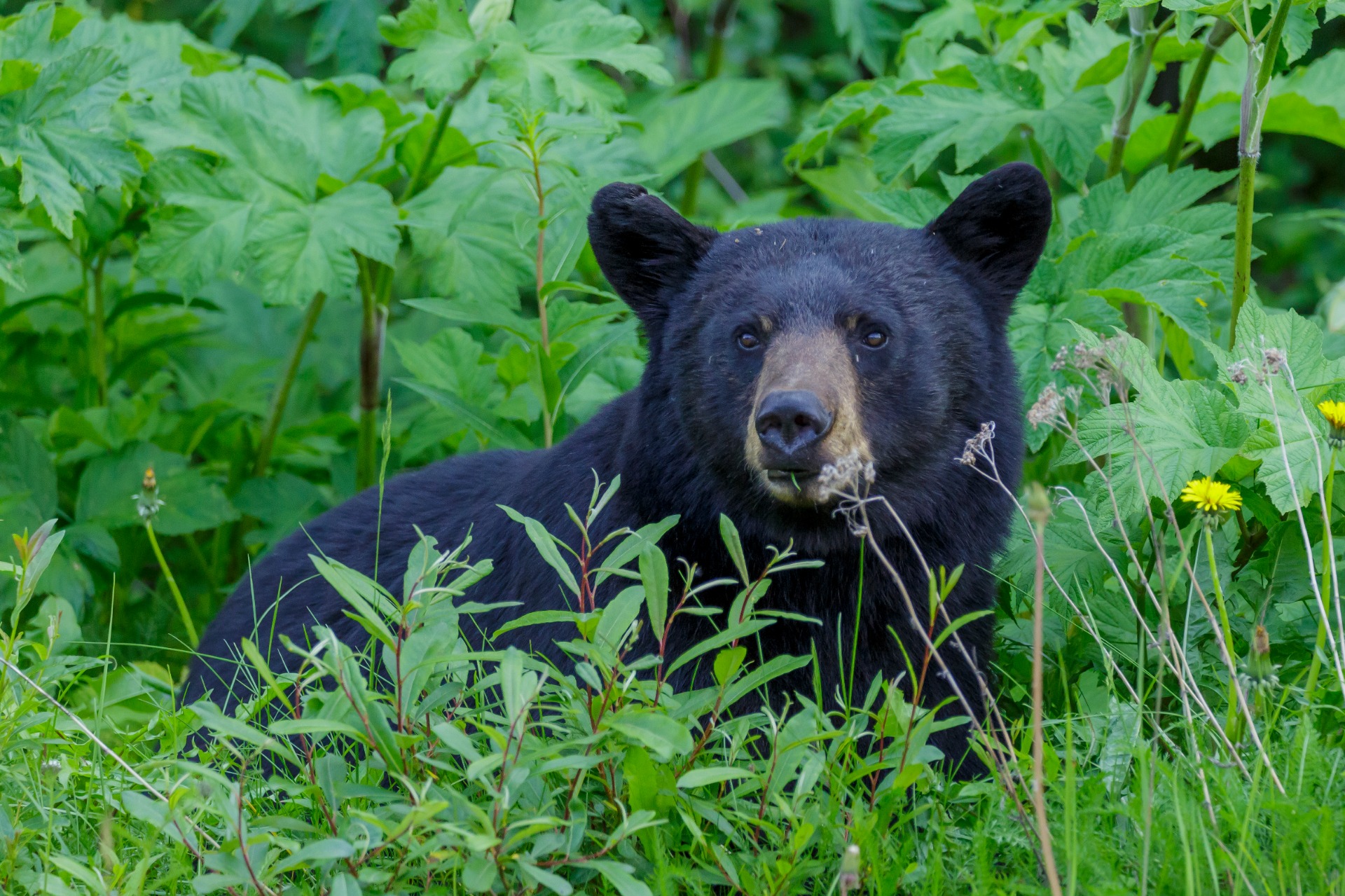Being Bear Aware: Grizzlies vs. black bears
Since we're in the middle of bear season, it seems appropriate to discuss the important differences between brown/grizzly bears (Ursus arctos) and American black bears (Ursus americanus). Being able to tell these bears apart can come in handy if you happen to encounter one in the wild.

The idea for this post came from a video I saw on YouTube recently that showed a black bear breaking into a house. In the comments, many people were mistakenly referring to the bear as a 'grizzly bear,' probably due to its size and color.
Although these kinds of mistakes are usually quite harmless, when it comes to bears, being able to differentiate between these species can make all the difference if you stumbled upon one of them in real life.
Of course not everyone is at risk of coming face-to-face with a bear, so it may seem pointless to learn the differences between these bears. However, with as much as people are surrounded by the internet in this day and age, it's important to have a more solid understanding of the media they encounter in their daily lives.
Location
Like many cases of animal identification, geographical location is usually a good place to start. American black bears and brown/grizzly bears share the same habitats in a lot of cases.
If you're not already familiar with the predator species in your area, this should be a priority before heading out into the woods. Find out which bear species you may encounter so that you can be prepared for such a situation. This is especially important if you are traveling somewhere new and you are unfamiliar with the fauna of that location. It's also worthy to note that this is important even outside the context of black bears and grizzly bears.
If you happen to be living in or visiting a place that has multiple bear species, this is where identification can come in very handy.
Brown bears, which is the species that grizzlies fall under, live all over the world and even get as far south as the northern parts of India. Black bears are specific to the Americas.


Color
One of the most common misconceptions about bear identification is that color can give you a good indicator of which species of bear you're looking at. This is incorrect. Color is not as important as looking at the bone structure of these animals.
The reason color can throw you off is that bears of the same species come in various colors; it's kind of like how human hair comes in many different shades as well.
Unfortunately, common names for animals can be very misleading. Although most black bears are actually black, they can be brown, cinnamon, blonde, or even white. Similarly, most brown bears are actually brown or grizzled, but they can also be very dark in color or very light.
*Special note on size:
Like color, size is somewhat less important for identification. Black bears are on average smaller than a brown bears. However, if you're getting friendly with a bear in the wild, it seems unlikely that you'd care that much about how big it is. It's bigger than you, and that's all that really matters here.

Shape
This is the most reliable way to tell the bears apart if you're uncertain.
Brown bears are much more blocky in shape and they have a very distinctive hump. Their ears are shorter and rounder and their snouts are much more rectangular. They have large blocky head and overall look like very muscular bears.
Black bears are much more slender than brown bears They do not have a distinctive hump, which can be the best way to tell it's a black bear. They have large ears relative to their head size and slender snouts. Overall they have softer more slender structural features and may even appear rotund if very large.
Stay Safe
Please do utilize your local resources for staying safe in bear country. It's important to know how to interact with wildlife in order to have the best experiences.
Black bears and brown bears not only look differently but they behave differently. Playing dead isn't always the right thing to do, so make sure you reach out to local park services or wildlife agencies if you're unsure of what to do if you encounter a bear. They can also give you guidance for precautionary measures and tools like bear spray and its efficacy.
Most importantly, NEVER run from a bear. They can run 30 mph (60 kmph), which is about 50 ft per second (15 m per second.) Usain Bolt couldn't outrun a bear. Plus, this only makes you look like prey, so don't ever run from bears.
Sources & Further Reading
1. "American black bear." Wikipedia. Wikimedia Foundation, Inc., 31 Jul. 2020. Web. https://en.wikipedia.org/wiki/American_black_bear
2. "Bear Identification." NPS.gov. National Park Service. 18 Sep. 2017. Web. https://www.nps.gov/articles/bear-identification.htm
3. "Brown bear." Wikipedia. Wikimedia Foundation, Inc., 29 Jul. 2020. Web. https://en.wikipedia.org/wiki/Brown_bear